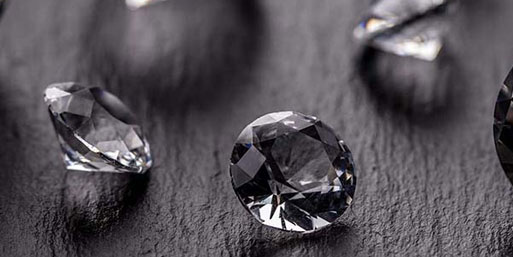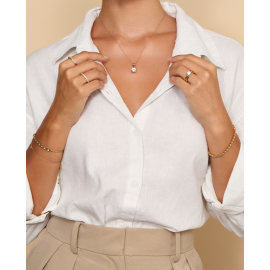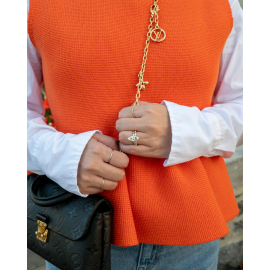Price match guarantee

We’ve teamed up with Klarna to provide flexible payment options, allowing you to shop the way you want. With Klarna, you can split your payment into 3 instalments or choose to pay later, making your shopping experience smoother and more convenient. Your order total must be between £100 and £499 to qualify.

We’ve teamed up with Klarna to provide flexible payment options, allowing you to shop the way you want. With Klarna, you can split your payment into 3 instalments or choose to pay later, making your shopping experience smoother and more convenient. Your order total must be between £100 and £499 to qualify.

April 04, 2016 | by Admin
It is law within the UK that every item of precious metal sold such as Platinum, Gold, Silver is stamped labelling the item with the type of metal it is. Platinum pieces which weigh less than 0.5 grams, 18ct Gold and Palladium pieces weighing less than 1.0 gram and Silver pieces weighing less than 7.78 grams are except from hallmark.
At Diamonds Factory all our products are hallmarked as per UK hallmarking law from London Assay Office (The GoldSmith Company)
The Goldsmiths' Company Assay Office is the oldest assay office in the United Kingdom. It has provided hallmarking services since The Goldsmiths' Company was founded in the 1300s. The company received its royal charter in 1327 and ranks 5th in order of precedence of the 12 Great Livery Companies of the City of London.
Hallmarking dates back to the 1300s when Edward I of England passed a law requiring any item made of silver, which was offered for sale, to be at least of equal quality as that of the coin of the realm (silver currency). The wardens of The Goldsmiths' Company were tasked with visiting workshops in the City of London to assay (test) silver articles. If these articles were found to be below standard they were originally destroyed and the metal forfeited to the King. If they passed, each article received the King's mark of authentication - the mark of a leopard's head. By 1478, there were several hundred workshops and merchants manufacturing silver articles in the City of London. It was not possible for the wardens to visit them all so the merchants were ordered to bring their items to Goldsmiths' Hall for testing and marking and a permanent Assay Office was established in the building. This is the origin of the term hallmark - struck with the King's mark at Goldsmiths' Hall.
In 1544 the Goldsmith's Company adopted the King's mark as their town mark and the mark of the leopard's head is now internationally recognised as the mark of this assay office.
The Goldsmiths's Company Assay Office is still based at Goldsmiths's Hall and remains the oldest company in Britain to be continually trading from the same site. However, it also has two satellite offices; at Greville Street in Hatton Garden in the heart of the London jewellery quarter and within a high security complex near London's Heathrow airport. It now has a new off-site facility within the Dalston-based jewellery manufacturer, Allied Gold. This is the first time in the Assay Office's 700 year history that it has opened permanent hallmarking services on a customer's premises.
In addition to hallmarking, the office has now expanded its range of services to support the jewellery trade and enforcement authorities. It offers a variety of specialist analytical services including nickel, lead & cadmium testing, antique silver dating, non-destructive compositional analysis, plating thickness measurement and a melt and assay service for scrap precious metal carried out in their fully independent on-site laboratory. Other services offered are a jewellery valuation service, laser marking, trading standards assistance, high quality photography and a comprehensive range of training and educational seminars, lectures and specialist events.






The sun’s out, the window is open and your winter coat has retired to the wardrobe. April just makes us happy after a long time in the dark. In the birthstone calendar, April is known as the month of the diamond, and having been associated with the light, the diamond as the jewel of spring makes perfect sense.
If you’re not familiar with the birthstone calendar concept, it’s fairly simple. Just like horoscopes, there’s twelve different gemstones which have been associated with their own months. For example, the December birthstone(s) are all an exquisite, icy blue, which fits the season perfectly. While it might be more fitting for April to have been green for spring, the pure white colour is perhaps more fitting to symbolise a blank slate; a completely new beginning.
Here’s some insights about this month’s very special gemstone :
1. The light collector
You can definitely notice how the diamond is able to collect and refract light better than any other gemstone. Very clear diamonds that have been excellently cut are extremely noticeable, even all the way on the other side of the room.
2. A blank state
The purest of white reminds of what it feels like to start new all over again. Perhaps because we’re able to visualise what’s happening in our minds. We’ve noticed that when people have a look at diamonds, they really stop to take their time and look carefully, which is no coincidence.
3. A piece of history
You’re wearing a piece of history; quite literally. Natural diamonds are thought to be millions of years old. It would be great if we could find out the date of formation, but the paperwork would probably be a nightmare.
4. Invincible
As nothing can scratch a diamond other than another diamond, people like the idea of wearing them in order to symbolise strength. If only we could make everything out of them, then nothing would break, and insurance companies might have a problem.
5. A piece of lightning
It was written in Sanskrit texts that the diamond was a source of great power, believing it to have come down as a piece of lightning. The sharp glint of the diamond is certainly looks like lightning, but luckily for us it’s not physically the case.
6. Colour carrier
There’s a deep relationship between our minds and colour. Look at how a particular colour affects or reflects your current mood, and you’ll see how much of an integral role colour plays in our lives. If look really carefully at a diamond, you might see small flickers of the colour spectrum, like a rainbow reflected in a prism.
7. A new beginning
People often use jewellery to mark new beginnings or to celebrate a particular point in time. We’ve seen that it’s customary with some people to buy their wife a bracelet for their anniversary or a full eternity ring for the birth of a new child.